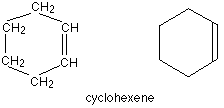|
Chemguide: Support for CIE A level Chemistry Learning outcomes 10.1(f) (part) and 10.1(g) These statements talk about cis-trans isomerism, a form of stereoisomerism. Before you go on, you should find and read the statement in your copy of the syllabus. You will find this discussed in detail on the page about geometric isomerism. Geometric isomerism is an alternative name for cis-trans isomerism. The latest name is E-Z isomerism. For the current CIE syllabus, you do not need to know anything about the E-Z system. You do not need the detailed explanation at the bottom of the page about the physical properties of cis-trans isomers. However, you should know that cis and trans isomers will have slightly different melting and boiling points. This bit of knowledge came up as a part of a multiple choice question in the past, despite there being no specific mention of it in the syllabus. You could read this section if you were interested, but you won't be examined on it. The question of cis-trans isomerism around a double bond in a ring compound came up in a multiple choice question in May/June 2011. The simplest compound like this is cyclohexene:
In a small 6-carbon ring like this, the carbon atoms which are joined to the double bond in the ring are always going to be in the cis position relative to each other. There is no way that you could make a model of this where the ring carbons were trans to each other - it would be impossible to join the ring up. The examiners just expected you to realise that cis-trans isomerism in a small ring doesn't happen. | |
|
Note: In a bigger ring, this won't necessarily be true. There are cis and trans versions of cyclooctene (an 8-carbon ring). Presumably, the same is true for rings containing 9 or more carbons as well. For CIE purposes, you are most likely to meet small rings like cyclohexene. | |
© Jim Clark 2010 (last modified August 2013) |
|
